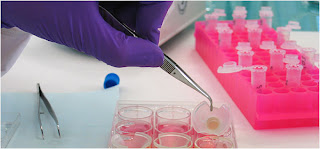L'Oreal's new product development strategy and the way they have successfully managed to achieve considerable market shares through consistent Research and Development efforts.
L’Oreal has not only followed a comprehensive, long term R&D strategy that has resulted in creating technological breakthrough products like Fructis, but it has also tried to address and maintain its balance between R&D-marketing interface.
Moreover, the company follows a three tier strategy for producing commercially viable products. The three structured strategy includes L’Oreal’s advanced research, applied research and product development, each stage having its own unique functions to perform in order to create successful innovations.
Article by: Moore, Elisha (THIS ARTICLE IS AWESOME I HAD TO POST IT !)
Why is new product development so important for a company like L'Oreal?
L’Oreal is a well established company in fashion business and in order to maintain its superior standing in the global market, it has to lay considerable emphasis on the strategies it employs for development of new products. Fashion has been defined by Paul F. Nystrom as ‘nothing more or less than the prevailing style at any given time’ (Hines & Bruce, 2001). Two important concepts can be derived from this concise definition: firstly, a style is not fashion unless it is commonly accepted (prevailing); secondly, fashion is transient (at any given time). These characteristics of the fashion phenomenon had profound implications for the supply chain, the product life cycle and the complexity of the markets served by L’Oreal and its competitions.
L’Oreal is a well established company in fashion business and in order to maintain its superior standing in the global market, it has to lay considerable emphasis on the strategies it employs for development of new products. Fashion has been defined by Paul F. Nystrom as ‘nothing more or less than the prevailing style at any given time’ (Hines & Bruce, 2001). Two important concepts can be derived from this concise definition: firstly, a style is not fashion unless it is commonly accepted (prevailing); secondly, fashion is transient (at any given time). These characteristics of the fashion phenomenon had profound implications for the supply chain, the product life cycle and the complexity of the markets served by L’Oreal and its competitions.
The speed at which fashion markets change is very high, with very short product life cycles. Many fashion items have product cycles as short as half a year, or even a few weeks. Consumer’s preferences depend on the season, on the social and cultural environment and on the effects of previous marketing communication for fashion items or substitute products (Mintel, 2005). Responding in a timely way to these changing demands is thus vital for success. Moreover, Crawford (1988) has also established that without new products, firms will certainly be at a stand still. The research also highlights that initial or early entry of new products can result in new market development, long term market dominance, and foreclosure of competitors’ responses.
The characteristics of the fashion industry require companies to make strategic choices about factors such as quality, speed, technology, price and flexibility: these factors define the positioning of a company (Abell, 1993). Drawing upon the information provided in the case study, it can be suggested that L’Oreal operates in the top end of the fashion market with clear market positioning, which can be depicted as follows:
L’Oreal’s targeted market segments can be characterized as fashion trend-setters, and these are the customers in the high and medium/high market segments: they demand products with innovative styles, realized in exclusive physical attributes with top-level quality by scientists and designers that have built the reputation of powerful brands. It should be noticed that firms that operate in the mass segment which targets fashion followers tend to imitate the high performing products of top brands like L’Oreal and therefore the competitive advantage of top brands recedes over time, making product lifecycle short. Given the high quality expected of its products and the short product life cycle prevailing in fashion, L’Oreal has adopted a vertical integration, which afforded it a full control of quality and operations. (Erica & Stefania, 2004).
Moreover, successful new product developments are likely to earn L’Oreal a superior market share and turnover thus increasing the value of the company. Also, L’Oreal has been a vanguard of fashion and in order to keep up with the expectations of its customers and consumers, the company has to lay in line new formulas that are carefully researched and tested for their effectiveness. For e.g. when the Japanese people were tired of having black hair and required an alternative to western hair colors due to their poor results, L’Oreal came up with an effective new hair formula that first bleached their hair and then dyed them according to their desirable color.



